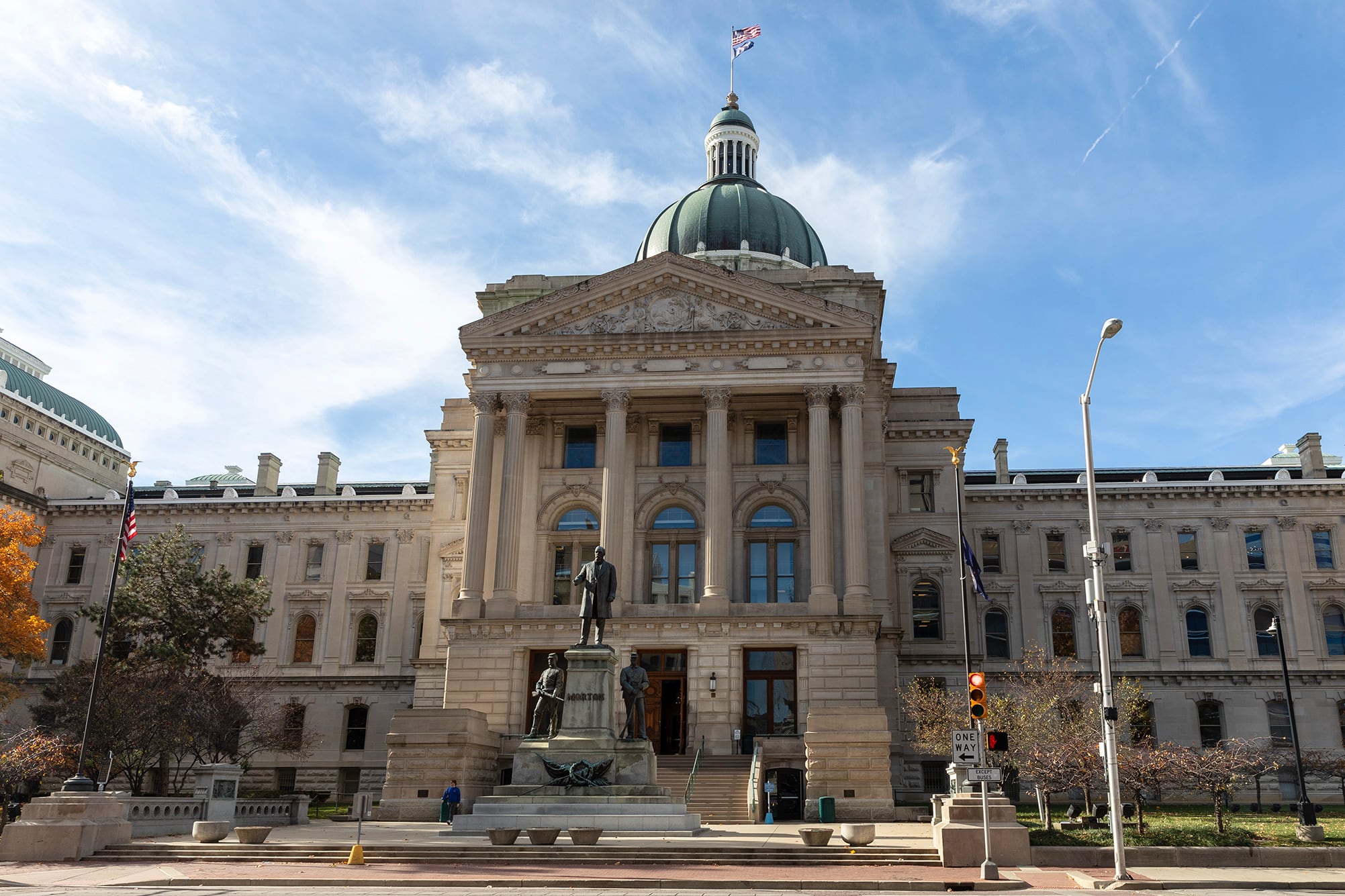Sign up for Chalkbeat Indiana’s free daily newsletter to keep up with Indianapolis Public Schools, Marion County’s township districts, and statewide education news.
More counselors, attendance liaisons, and resources for schools.
More positive engagement for students, and greater accountability for parents.
Those are some of the suggestions to get more Indiana students to come to school every day heard by the Interim Study Committee on Education at its meeting Thursday. The panel is considering recommendations on chronic absenteeism and student discipline before the legislature reconvenes in January.
Though chronic absenteeism rates have declined since hitting a high in 2022, the rate of Indiana students who miss 18 days or more in a school year remains much higher than before the pandemic. And Indiana Department of Education data has linked chronic absenteeism to more suspensions and expulsions and worse academic performance.
Earlier this year, lawmakers passed a bill requiring schools to hold attendance conferences with the parents of truant elementary students, and refer those whose children’s attendance does not improve to local prosecutors. But the authors of the bill conceded that more work must be done to address absenteeism among older students. That led to legislative leaders assigning the topic to an interim study committee.
Recommendations made by interim committees often signal what kind of legislation lawmakers will bring forward at the next legislative session. The next meeting of the committee is not yet scheduled.
Leaders highlight counselors’ role in cutting chronic absenteeism
At the committee’s inaugural meeting, lawmakers heard testimony from advocates and school districts about the need for more school counselors and attendance liaisons — and funding for both types of positions — to help address the reasons that individual students are missing school.
Officials with New Castle schools, a district of around 2,900 students east of Indianapolis, said the district leveraged a $4.3 million Next Generation School Improvement Grant to add a secondary school attendance liaison to help improve absenteeism.
Indiana’s statewide counselor ratio is one for every 694 students. But New Castle maintains a 255:1 student-to-counselor ratio, according to Superintendent Matthew Shoemaker, who said the positions are critical to identifying the challenges students are facing and connecting them to resources.
The district’s attendance liaison Katie Smith told lawmakers that she makes between 30 to 40 phone calls per day to the families of absent students to find out why they’re not at school.
The reasons range from simple — like missing the bus — to complex socioeconomic issues, like a student’s need to work or watch younger siblings, Smith said. Meanwhile, positive engagement at school, like a connection to a teacher or a counselor, motivates students to attend.
Smith said the district has both reduced absenteeism and improved the share of students who have more than a 94% attendance rate. The district’s chronic absenteeism rate fell from around 25% in 2023 to 19.5% in 2024.
The district would not have been able to add the attendance liaison position without the Next Generation grant awarded in 2022, officials said in response to questions from lawmakers.
Funding could also support technological improvements, like for a platform that automatically highlights which students need a call or letter home about their attendance, said James Taylor, director of student and social services at Warren Township schools.
Some schools have contracted with outside organizations to provide similar support services. For example, representatives of City Connects said their program has placed coordinators at around 60 schools in Indiana who identify external factors that may help explain why students are missing school.
The program, which works with Marian University’s Center for Vibrant Schools, is funded through a combination of $20 million in federal funding, $3 million in state funding, and philanthropy.
Panel discusses parent, student roles in missing school
Lawmakers and public speakers also discussed whether COVID has led to a cultural shift in how families view school attendance, with more families taking vacation during school time.
Democratic Rep. Ed Delaney suggested that chronically absent students and their parents could be restricted from extracurricular activities like sports and performing arts. But GOP committee chair Rep. Bob Behning noted that such activities often help motivate students to attend school in the first place.
Some speakers told lawmakers that their first attempt to address absenteeism through the new law enacted through SEA 282 has had unintended consequences. In some school districts, students with disabilities who miss school for doctors’ appointments have been told they must provide documentation for every visit.
And frequent phone calls home sometimes anger parents, said Union Elementary School Principal Katie Smith.
“We need to set clear expectations and continue to partner with parents, or our attendance rates will never improve,” Smith said.
Amy Boone, principal of Southport High School in Perry Township, said the tight timeline in which schools must hold meetings with parents means that parents frequently can’t attend.
While the new law has drawn more attention to attendance and led some students to attend more frequently, some parents have reacted by withdrawing their children from district schools and enrolling them in virtual schools or home schools, Boone said. The school uses its federal Title I funding for the costs of holding parent meetings.
“The student will be the main stakeholder in ensuring attendance,” Boone said. “Giving them reasons not to miss out on school will ultimately be the deciding factor.”
Aleksandra Appleton covers Indiana education policy and writes about K-12 schools across the state. Contact her at aappleton@chalkbeat.org.






